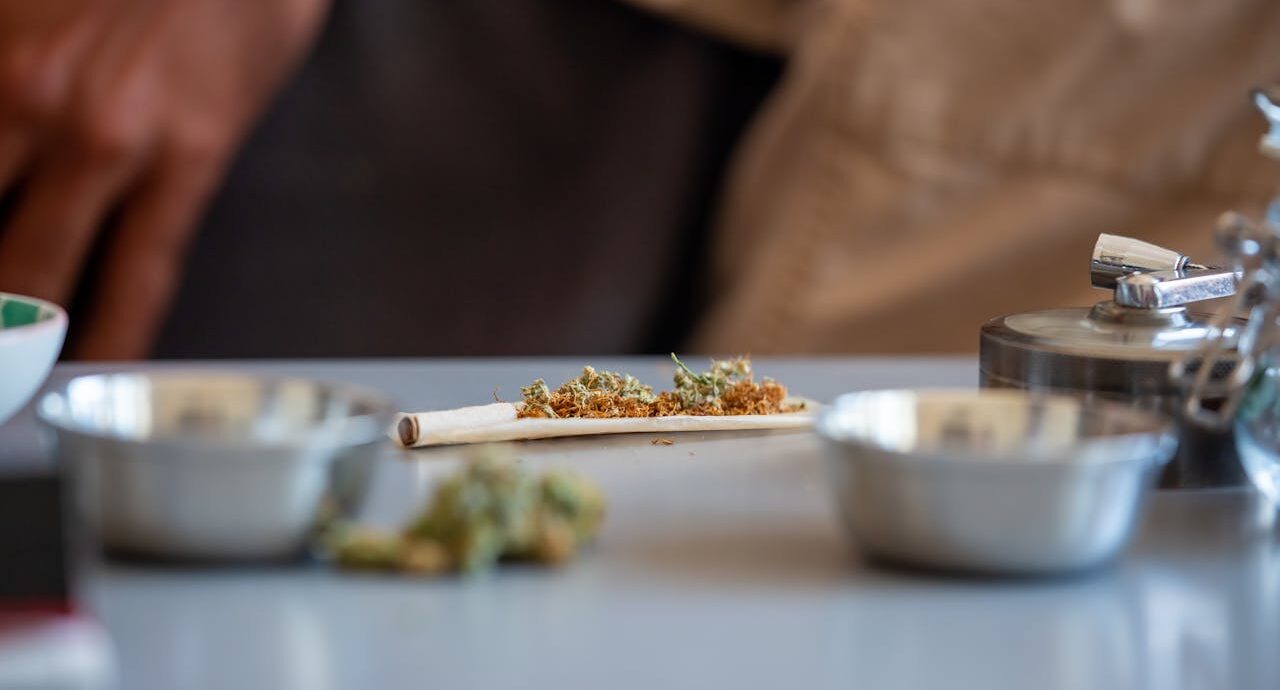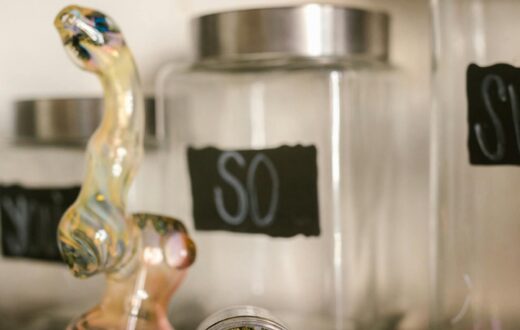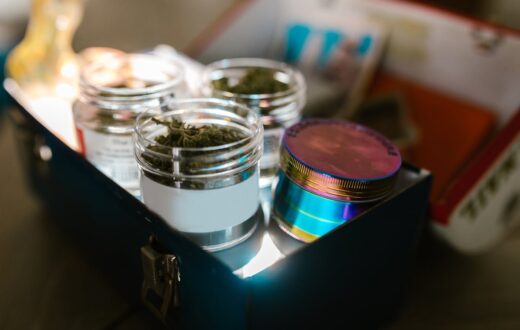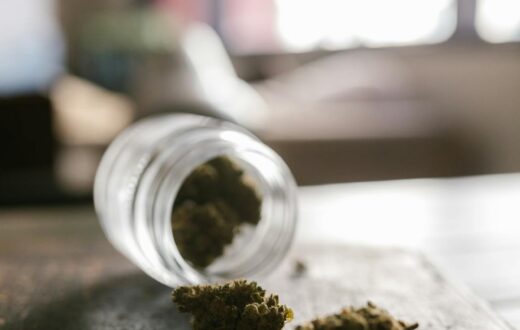Introduction to Auto Haze Strain
The Auto Haze strain is a remarkable hybrid that has garnered significant attention among cannabis cultivators, particularly those seeking high-yield results. This strain combines the genetics of Haze, a renowned sativa-dominant variety, with ruderalis genetics, resulting in an autoflowering variant. The fusion of these genetic backgrounds gives Auto Haze its unique characteristics and robustness that appeal to both novice and experienced growers.
One of the standout features of the Auto Haze strain is its flowering time. Unlike traditional photo-dependent strains, Auto Haze transitions from the vegetative stage to flowering based on maturity rather than light cycles, typically yielding buds within 8 to 10 weeks from seed. This allows growers to harvest multiple crops in a single growing season, significantly enhancing yield potential.
<pmoreover, 20%.=”” a=”” an=”” and=”” attribute=”” auto=”” balanced=”” boasts=”” by=”” cannabis=”” captivating,=”” characterized=”” choice=”” community.<pthe a=”” against=”” among=”” and=”” appreciate=”” as=”” attributes=”” auto=”” cannabis=”” capabilities,=”” challenges,=”” combination=”” competitive=”” continue=”” cultivators=”” distinguish=”” effects,=”” environmental=”” explore=”” exquisite=”” flavors—positions=”” focused=”” from=”” further=”” grow=”” growers=”” haze=”” high=”” how=”” in=”” it=”” its=”” many=”” market.
Choosing the Right Seeds
Selecting the appropriate seeds is a critical step when embarking on the journey of how to grow Auto Haze strain successfully. Quality seeds play a significant role in determining the health and yield of your plants. Therefore, it is essential to source seeds from reputable breeders who are known for their quality and reliability. Purchasing seeds from established companies that provide detailed information about their breeding process and genetics ensures that you are investing in high-quality genetics that are more likely to thrive under your care.
When obtaining seeds, one must consider the differences between feminized and regular seeds. Feminized seeds are specifically bred to produce female plants, which are the ones that yield the sought-after buds. This can be especially beneficial for novice growers who are still learning the ropes of plant cultivation. On the other hand, regular seeds can yield both male and female plants, which means you will need to identify and remove the males to prevent pollination. If your primary goal is to learn how to grow Auto Haze strain without the complexities associated with male plants, feminized seeds may be the preferable choice.
Furthermore, checking the seed genetics is another crucial aspect to consider. High-quality genetics contribute to the overall health, growth rate, and resilience of the plants. Look for Auto Haze seeds that come with a proven pedigree and positive reviews from other growers. Genetics can affect traits such as resistance to pests and diseases, yield potential, and THC/CBD levels. Understanding these factors will greatly enhance your chances of success while learning how to grow Auto Haze strain, as doing so sets a solid foundation for healthy plants and rich harvests in the long run.
Optimal Growing Conditions
Growing the Auto Haze strain requires specific environmental conditions to ensure optimal growth and high yields. Understanding these conditions can significantly enhance your success in cultivating this unique cannabis variety. Key factors to consider include temperature, humidity, light requirements, and soil types.
The ideal temperature range for Auto Haze plants is between 65°F to 80°F (18°C to 27°C) during the daytime. Lower temperatures can slow growth, while excessively high temperatures can lead to heat stress, which negatively affects yield and quality. Nighttime temperatures should remain slightly lower, around 55°F to 70°F (13°C to 21°C), to promote healthy growth patterns.
Humidity levels also play a crucial role in the growth of Auto Haze. During the germination and seedling stages, maintaining humidity between 65% and 70% is beneficial. However, as the plants mature, it’s essential to gradually decrease humidity to about 40% to 50% to prevent mold and bud rot. Proper airflow and ventilation within the growing area can help maintain optimal humidity levels.
Lighting is another critical factor in growing Auto Haze successfully. This strain benefits from a strong light source, with 18 to 24 hours of light exposure during the vegetative stage. In the flowering phase, a light cycle of 12 hours of light and 12 hours of darkness encourages optimal bud development. LED grow lights or high-intensity discharge lights are recommended for their efficiency and effectiveness.
Lastly, the soil type contributes significantly to the growth of Auto Haze strain. A well-aerated, nutrient-rich soil that retains moisture yet provides good drainage is essential. Adding organic matter, such as compost or worm castings, can enhance soil quality and promote healthy plant growth. By optimizing these growing conditions, cultivators can maximize the potential of the Auto Haze strain and enjoy a rewarding yield.
Growing Auto Haze Indoors vs. Outdoors
When considering how to grow Auto Haze strain effectively, one of the primary decisions is whether to cultivate indoors or outdoors. Each method has its own set of advantages and disadvantages that growers must evaluate based on their specific circumstances and goals.
Indoor cultivation offers the benefit of complete environmental control. Growers can regulate factors such as temperature, humidity, and light cycles to optimize conditions for the Auto Haze strain. This is particularly beneficial for those living in regions with unpredictable climates, allowing for year-round cultivation. Additionally, the risk of pests and diseases is generally lower indoors, making it easier to maintain healthy plants. However, growing Auto Haze indoors can require a significant investment in equipment, including grow lights, ventilation systems, and other technology to mimic the ideal growing conditions.
On the other hand, outdoor cultivation of Auto Haze takes advantage of natural sunlight and can lead to larger yields without the costs associated with indoor setups. Growing outdoors allows the plants to stretch and flourish in an unrestricted environment, often resulting in robust plants and potentially higher overall yields. However, outdoor growers must consider their local climate and the seasonal changes that can impact growth. Outdoor cultivation is also more exposed to pests and environmental challenges, such as fluctuations in temperature and rain, which can affect the health of the plants.
Ultimately, the choice between indoor and outdoor cultivation of Auto Haze strain will depend on several factors including space availability, budget, and personal preference. Growers must weigh the pros and cons of each method carefully, ensuring that their chosen cultivation approach aligns with their goals for yield and sustainability.
Watering and Nutrient Needs
To achieve optimal growth when cultivating the Auto Haze strain, understanding watering and nutrient requirements at various growth stages is crucial. This strain thrives on a consistent watering routine that ensures the roots remain adequately hydrated while avoiding over-saturation, which can lead to root rot and other complications.
During the germination phase, the seeds do not require much water. A lightly moistened medium is sufficient to encourage sprouting; it is important to ensure the soil is neither waterlogged nor too dry. Once seedlings establish themselves, a watering regime that maintains slightly moist soil is ideal. As the plants enter the vegetative stage, they will demand more water, typically requiring a thorough watering every few days, depending on environmental factors such as temperature and humidity.
When it comes to nutrient needs, Auto Haze plants will benefit immensely from nutrient-rich soil that provides essential macronutrients such as nitrogen, phosphorus, and potassium. During the vegetative phase, nitrogen is particularly important to support robust leaf growth. As the plant transitions to the flowering stage, the focus should shift to increasing phosphorus and potassium levels to promote bud development and overall yield.
Growers should monitor the pH levels of the soil or hydroponic systems, with a target range of 6.0 to 6.8 being ideal for nutrient absorption. Moreover, utilizing high-quality fertilizers tailored for autoflowering strains can enhance the plant’s growth. Integrating organic nutrients can also be beneficial, as they improve soil health and microbial activity, thus supporting the overall vitality of the Auto Haze strain.
Ultimately, balancing adequate watering with nutrient requirements is key to how to grow Auto Haze strain successfully, leading to healthy plants with high yields.
Training Techniques for Optimal Yield
When it comes to cultivating the Auto Haze strain, employing effective training techniques can significantly enhance your yield. Training not only optimizes space but also ensures that the light penetration is maximized across the plant, which is crucial for developing a bountiful harvest. Here are some essential training methods that can be applied when growing Auto Haze.
One popular technique is topping, which involves cutting off the main stem above the node. This encourages the plant to grow multiple colas rather than a single top cola. For Auto Haze plants, this should be done when the plant has developed at least four to five nodes. This technique not only maximizes yield but also promotes bushier growth, allowing for better light distribution. When performed correctly, topping can result in a more vigorous plant capable of producing more bud sites.
Another effective method is Low-Stress Training (LST). This technique requires gently bending the branches and tying them down using soft ties or string. By positioning the branches horizontally, you allow the side shoots to catch up with the main stem, resulting in a more even canopy. LST is particularly suitable for Auto Haze due to its compact growth pattern, making it an efficient way to increase light exposure while minimizing stress on the plants.
Screen of Green (ScrOG) is an advanced technique that utilizes a mesh screen to support the plant’s growth. As the Auto Haze strain flowers, branches are woven through the screen, allowing for optimal light distribution. This method can significantly improve yield by ensuring that each bud site receives ample light and resources. The goal is to create an even canopy that maximizes efficiency in bud production.
Incorporating these training techniques while cultivating Auto Haze can lead to impressive yields. By applying topping, low-stress training, and ScrOG effectively, growers can maximise their harvest potential and enhance the overall growth of their plants.
Pest and Disease Management
Successful cultivation of the Auto Haze strain demands vigilant pest and disease management to ensure high yields and healthy plants. The first step in managing potential issues is understanding the most common pests and diseases that affect cannabis plants. Aphids, spider mites, whiteflies, and root rot are frequent threats. Identifying early signs of infestations—such as discolored leaves, sticky residues, or visible pests—is crucial for timely intervention.
Implementing Integrated Pest Management (IPM) practices is essential in maintaining the health of your Auto Haze plants. IPM focuses on a combination of biological, cultural, physical, and chemical tools to minimize pest damage. Start by promoting beneficial insects, such as ladybugs and lacewings, which prey on common cannabis pests. Cultivating a diverse plant environment can also attract these helpful organisms, providing a natural balance and reducing reliance on chemical solutions.
Another critical aspect of pest control is maintaining optimal growing conditions. Healthy plants are less vulnerable to infestations, so ensure proper spacing, ventilation, and moisture levels. Overwatering can lead to root rot, a disease that can devastate your crop. Monitor soil moisture closely and allow for adequate drying between watering sessions.
If infestations do occur, consider organic treatments such as neem oil or insecticidal soaps, which are less harmful to both your plants and the environment. However, in severe cases, chemical pesticides may be necessary. When using these substances, adhere to the recommended guidelines to minimize potential harm to your Auto Haze strain and surrounding ecosystem.
By taking a proactive approach to pest and disease management, growers can significantly enhance their chances of successfully cultivating the Auto Haze strain. Staying informed and aware of your plants’ needs will lead to healthier plants and ultimately, a higher yield.
Harvesting and Curing Auto Haze
Successfully harvesting Auto Haze strain involves careful timing and technique to maximize the potency and quality of your buds. To determine the optimal time for harvesting, monitor the trichomes closely. When approximately 70-80% of the trichomes turn milky white and about 20-30% are amber, it is an indication that the buds have reached their peak potency. This stage ensures a balanced effect that delivers both a euphoric high and a relaxing body experience. Additionally, examining the pistils can provide insight; ideally, about 70% of the pistils should have darkened and curled inwards.
Upon reaching the desired maturity, the next step is to execute a prompt and precise harvest. Use sharp, clean scissors or pruning shears to trim the buds from the plant, taking care not to damage the remaining foliage. It is advisable to perform this task in a well-lit and clean environment to reduce any chance of contamination. The harvested buds should be hung upside down in a dark, ventilated space with a humidity level around 50-60%. This position facilitates the drying process, which typically takes about 7 to 14 days. During this time, it’s crucial to monitor conditions carefully, ensuring temperature and humidity remain constant to prevent mold or mildew.
Once adequately dried, the curing process can commence, significantly enhancing the flavor and potency of the Auto Haze strain. Curing involves placing the dried buds into airtight containers, such as glass jars. Fill the jars only up to 75% capacity to allow air circulation. Store the jars in a cool, dark area, and open them daily for 10-15 minutes during the first week to let moisture escape. This process should continue for at least two weeks, with the duration extending for added flavor development. Properly curing Auto Haze enhances its aromatic properties and promises a rich, high-quality end product for consumption.
Conclusion and Final Tips
In conclusion, growing the Auto Haze strain presents an exciting opportunity for both novice and experienced cultivators seeking high yields and delightful flavors. This strain, known for its resilience and adaptability, offers numerous benefits such as a faster growth cycle and robust performance in various environments. By understanding its unique requirements and employing effective cultivation techniques, growers can optimize their harvest to achieve impressive results.
Throughout this guide, we discussed essential factors like soil health, lighting, and watering practices that directly impact the growth and yield of the Auto Haze strain. Implementing the right nutrients and monitoring growth stages are critical steps that ensure your plants thrive. Remember, patience and attention to detail are key components of successful cultivation. As you navigate your cultivation journey, consider experimenting with different techniques such as training methods or altering light cycles to further maximize the potential of your harvest.
For those eager to deepen their understanding of cannabis cultivation, there are numerous resources available. Online forums and specialized websites offer a wealth of information, where you can connect with fellow growers, share experiences, and seek guidance on specific issues. Additionally, attending local gardening clubs or workshops can provide valuable insights and foster community engagement among passionate cultivators. Engaging with groups focusing on how to grow the Auto Haze strain can offer support and inspire confidence as you work towards achieving high-yield success.
Ultimately, growing the Auto Haze strain can be an immensely rewarding endeavor. With dedication, practice, and the right knowledge, you can cultivate a bountiful harvest that showcases the unique attributes of this remarkable strain. Embrace the process, enjoy the journey, and watch your gardening skills flourish.














